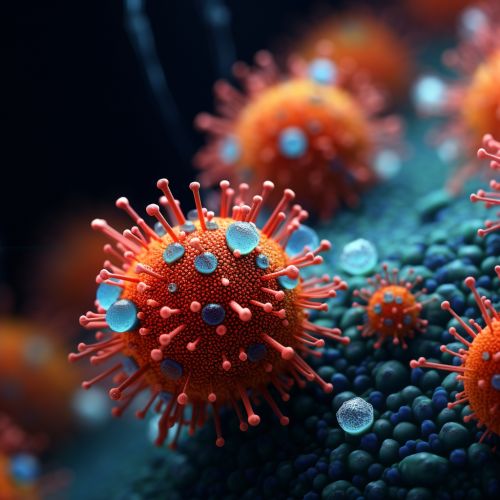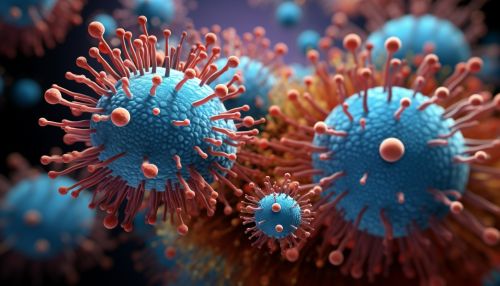Influenza virus
Overview
Influenza, commonly known as the flu, is a viral infection that attacks the respiratory system. It is a highly contagious illness caused by the Influenza virus, which can be divided into three types: A, B, and C.


Structure and Classification
The Influenza virus is an Orthomyxoviridae family member. It is an enveloped virus, meaning it has a lipid membrane taken from the host cell. The virus is roughly spherical, although it can also be filamentous. Its diameter is approximately 80-120 nanometers.
Influenza viruses are classified based on the type of two important surface proteins: hemagglutinin (H) and neuraminidase (N). There are 18 known H subtypes and 11 known N subtypes, but only H1, H2, H3, N1, and N2 are commonly found in humans.
Replication Cycle
The replication cycle of the Influenza virus begins with the virus attaching to the host cell using its H protein. The virus then enters the cell and releases its genetic material, which travels to the cell nucleus. The viral RNA is replicated, and new viral proteins are synthesized. The new viruses assemble at the cell surface and are released by budding.
Pathogenesis and Immunity
Influenza viruses primarily infect the cells lining the nose, throat, and lungs. The virus enters the body when a person breathes in contaminated droplets or touches their face after touching a contaminated surface.
The immune response to an Influenza virus infection involves both the innate and adaptive immune systems. The innate immune response is the body's first line of defense and includes physical barriers, such as the skin and mucous membranes, as well as immune cells like macrophages and neutrophils. The adaptive immune response involves B cells that produce antibodies against the virus and T cells that kill infected cells.
Epidemiology
Influenza viruses can cause epidemics and pandemics. An epidemic occurs when the virus spreads rapidly in a specific geographic area, while a pandemic occurs when the virus spreads worldwide. The most infamous pandemic is the 1918 Spanish flu, which killed millions of people worldwide.
Prevention and Treatment
The primary method of preventing Influenza virus infection is through vaccination. Antiviral drugs can also be used to treat Influenza virus infection, although they are most effective when taken within 48 hours of symptom onset.
